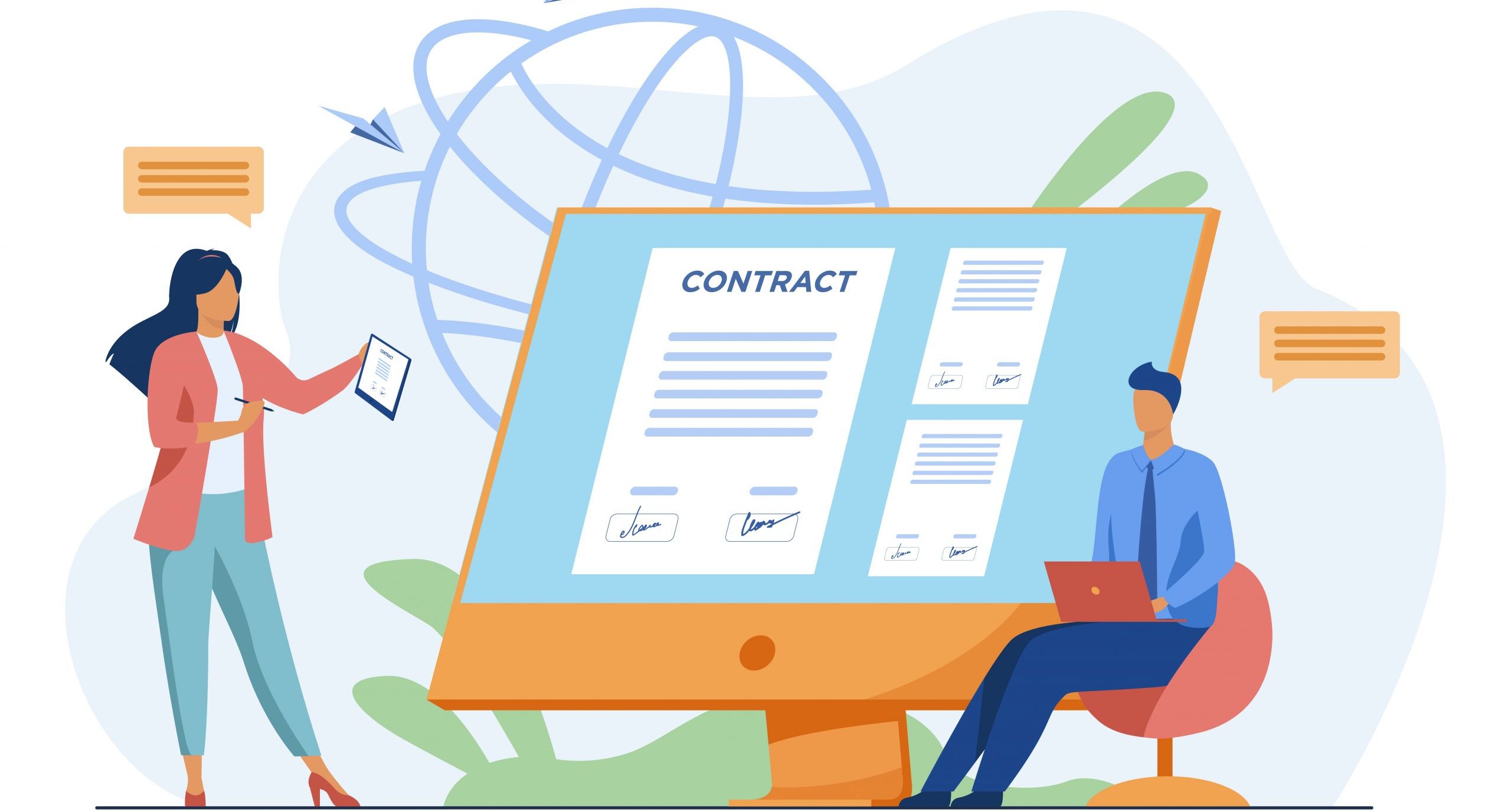
Knowing the life cycle of contracts is vital for an efficient management – as it impacts business health directly, as a whole. With the fierce market competitiveness and the high contract volume, many businesses don’t pay due attention to this process. However, many documents eventually exceed the renewal deadline, while others are even lost and forgotten in drawers and cabinets.
In a commercial transaction, the contract has the purpose of providing administrative and legal support to negotiation between companies, establishing obligations and rights for both parties.
Having this instrument at hand is vital for companies, for a proper support when dealing with customers and suppliers in their routine activities; for this reason, contract management is of paramount importance.
Contract life cycle management includes a host of activities, and you will have the opportunity to know each one of them in this post!
5 stages for efficient contract life cycle management
Stage 1 – Pre-contracting
This stage has the goal of defining the object of contracts, according to company’s demand. In other words, a given department must hire labor or buy products from a specific customer; this is how the contract begins.
At this stage, it must be defined who will be hired, what will be purchased, and what / how it will be delivered, along with where, how much (many), etc. These are the technical requirements of the contract in question.
Still in pre-contracting stage, the administrative requirements to authorize the contracting process must be defined – certificates to be delivered by suppliers, for instance, among other items.
This is when a draft contract comes in.
Stage 2 – Contracting
This is a very important stage, as it consists of contract negotiation and formalization. The previously generated draft contract is then analyzed by those in charge – which may result in the amendment of clauses of that document. It’s worth remembering that several drafts can be made until the desired format is achieved.
It is crucial to validate each detail, to ensure the best content of such document for both parties. At the end, the contract must be signed by the contracting and the contracted parties.
This stage ends when the alliance between parties is formalized.
Stage 3 – Pre-execution
The pre-execution stage encompasses the period between contract signing and the fulfilment of activities. In this stage, the company will plan the technical and administrative execution of the contract.
As to the technical aspect, the required activities to start contract execution must be evaluated – such as site preparation, which equipment will be needed, etc. Among administrative requirements, there is contract management – when data are stored in a centralized way, with access permission to those managers who must search and record one or other event type.
The payment flow must be directed to the financial team. Additionally, delivery schedules and acceptance terms must be defined.
This stage ends when the involved departments are informed about schedule and release, for execution purposes.
Stage 4 – Execution
Usually, this is the contract’s longest stage, as it involves the progress of what has been agreed, with the delivery of the agreed products or services.
It’s very important to carry out administrative activities at this point, in order to monitor the progress of actions, and guarantee what has been stipulated.
This is when the schedule, inspections, measurements, payments and other functions provided for in the contract must be controlled. It’s also time to check if any points must still be added, and if there is need for extensions, renewals or even agreement termination.
Stage 5 – Closure
When the effective date of the contract expires and there’s no renewal period, it’s time to analyze whether all the planned actions have been carried out and all records have been documented.
The contract can be terminated only if all activities have been fully carried out.
It’s important to check the events of each stage, to avoid losing any details. A good tip here is to standardize the way each step is analyzed, so they can show the same efficiency when managed.
It’s extremely important to know these five stages of contract cycle management, in order to do it efficiently.
It isn’t enough sometimes, however, because some companies eventually get lost in the several contracts they have filed. Therefore, having a tool to optimize the whole management process must be a priority.
And if you want to know more details about the importance of having a CLM solution, read our post called “Contract management: sustainability and performance for your company“.
Has your company a CLM solution already? Tell us in the comments!
Take this opportunity and subscribe to our newsletter, to stay updated with everything that happens in the B2B market.


 Português do Brasil
Português do Brasil Español
Español Português
Português
